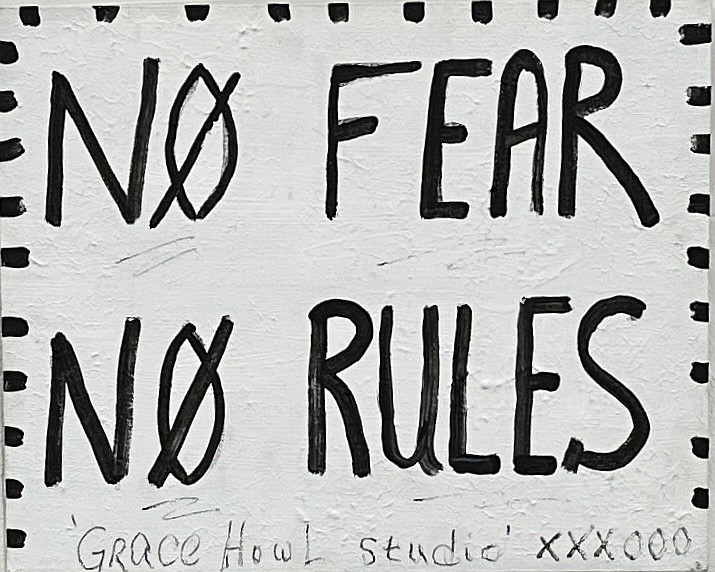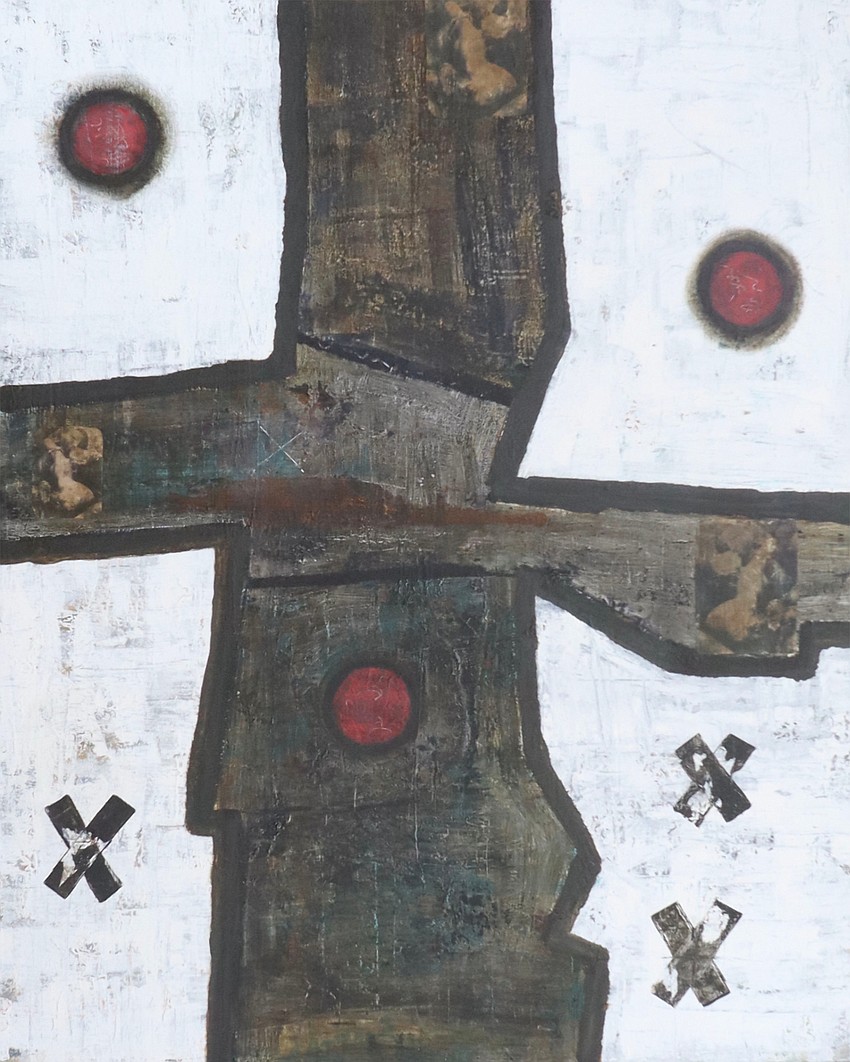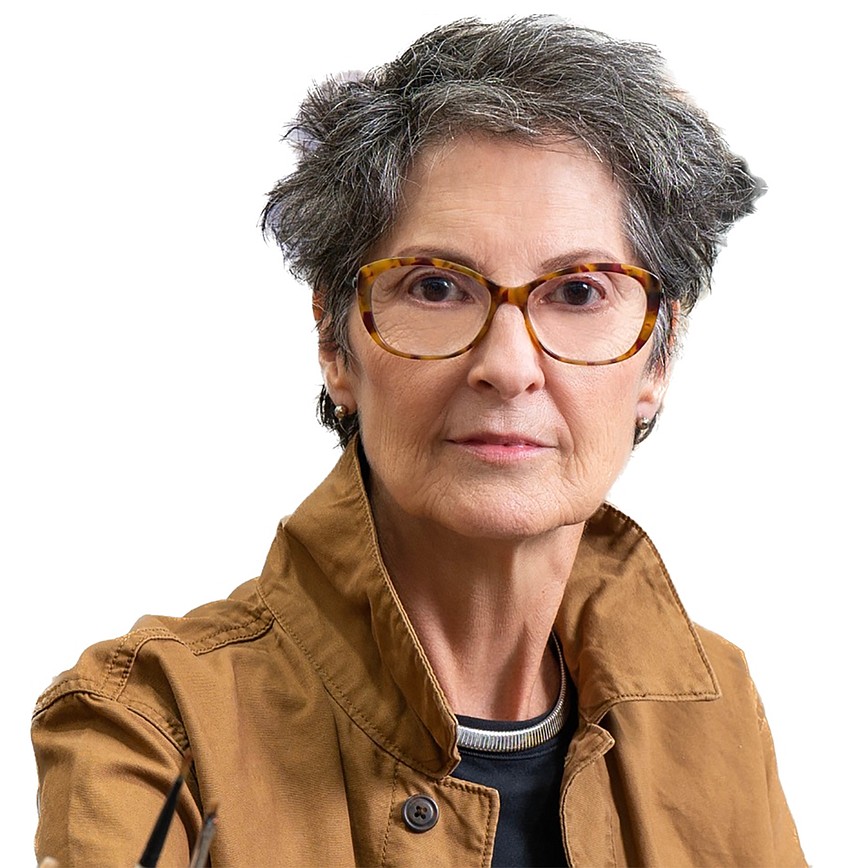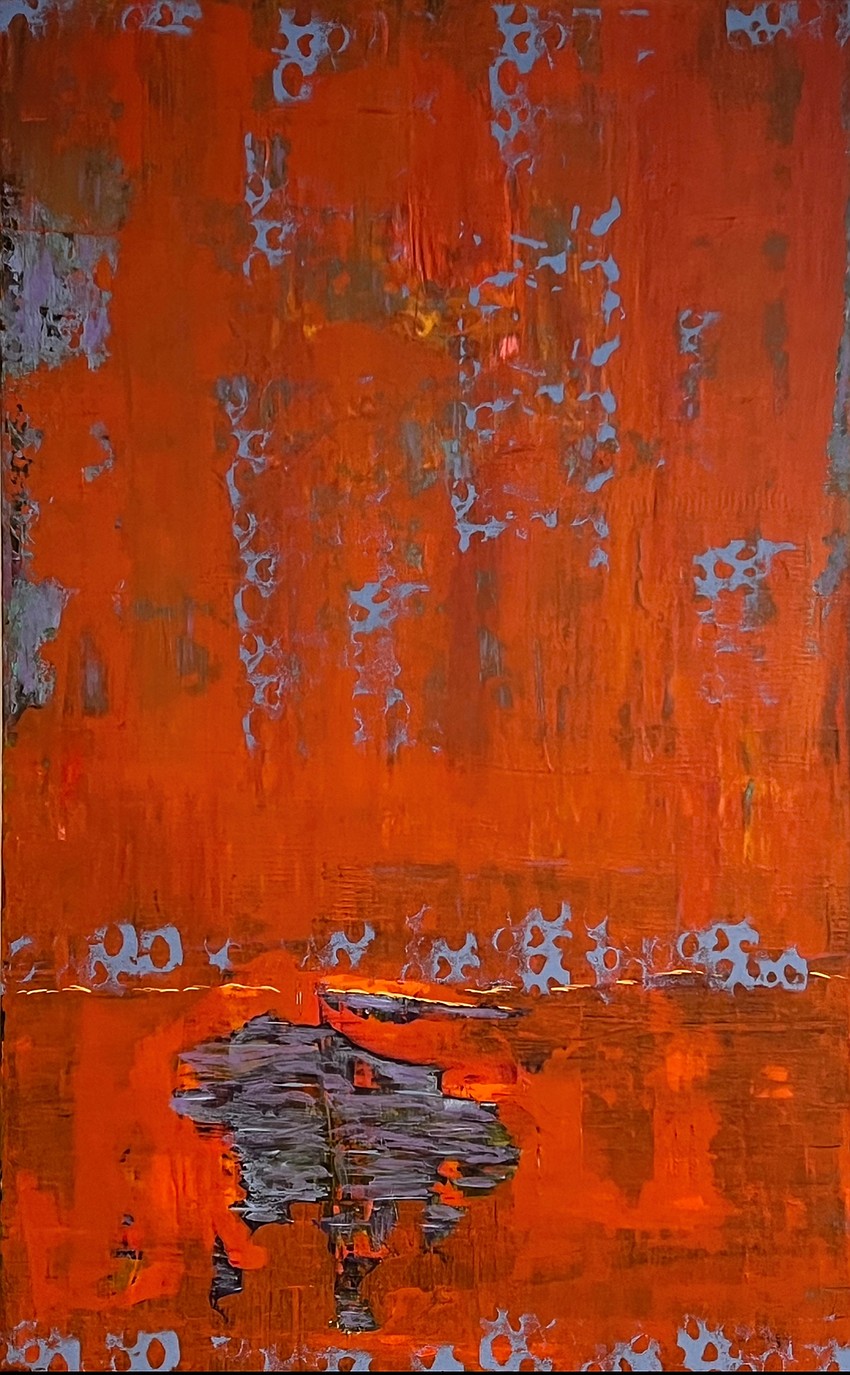- May 12, 2025
-
-
Loading

Loading

Grace Howl knows the secret of artistic growth. All it takes is courage and a leap of faith.
HowI has been a Florida-based artist since 2008. Mara Art Studio + Gallery is showcasing her work in its “Intersections” exhibition. The show comprises three series of Howl’s paintings from yesterday and today. One series revealed her latest artistic direction; the others illustrated where she's coming from and where she started.

“Altare de Asana Tantra” (2013) speaks of Howl’s birth as an artist. Seven large-scale, mixed-media paintings are all marked with a jagged X against shattered backgrounds of cryptic symbols.
As origin stories go, this one is highly abstract. But the message is there if you know how to read it. The series’ dominant image inspired the show’s name: “Intersections.”
It also recalls a crossroads in Howl’s life. Back in 2007, Howl was a power player in corporate America. Art was the last thing on her mind. But a car accident changed that.
“I was T-boned in an intersection,” she recalls. “That changed my world. I was no longer a part of corporate America, but I didn’t miss it. Believe it or not, I was blessed with colors and images that came to me.”
Vivid patterns and scenes flooded Howl’s mind. She started painting them as a form of therapy. This artful outburst came easily to her. It’s where Howl’s mind wanted to go. “I had no idea that art therapy existed,” she says. “Nobody suggested it to me. I just started painting on my own.”
Howl’s recovery period was tough. She couldn’t talk or perform many ordinary activities. “But I could paint — and I loved painting! That discovery really took me on a new journey.”
Once Howl began painting, she couldn’t stop. In an incredibly prolific period, she created a large body of work. The act of painting calmed Howl’s mind in a troubling time. Her self-prescribed art therapy worked.

But creating art didn’t feel like therapy to Howl. She was having too much fun. “I really enjoyed the painting process,” she says. “People liked my work — and I did, too. So I kept painting, and developed a 'no-fear, no-rules' attitude. I just painted whatever I felt like painting. And that's how I got into the art world.”
It's all because of a collision in a fateful intersection. Howl marked that moment in the seven paintings of her “Tantra” series, though she didn’t know it at the time.
“I didn’t see what I’d been painting until I’d completed the ‘Tantra’ series,” Howl says. “When I saw them all hanging together in my studio, it suddenly hit me. The large, jagged mark in the center of each painting wasn’t a cross or a distorted X — it was an intersection!”
Howl finally recognized the image she’d been painting — the intersection that dramatically transformed her life. “I broke out into tears and cried for over an hour after having that realization.”
But Howl didn’t cook up the archetypal image of a jagged crossroads from an intellectual recipe. That’s not her style. Howl doesn’t start with a preconceived idea; she discovers what she’s painting during the act of putting pigment on the canvas. In her “Tantra” series, she found out after the fact.
Such revelations can be intoxicating — but they’re not the point.
Howl isn’t motivated by results. She loves the paintings she creates. But she loves the painting process even more – especially when she’s lost in it. “While I’m painting, I lose all track of time and my things-to-do list,” she says. “I’m just there – creating whatever it is I create right now.”
During the act of creation, Howl tries to live in the moment. She recently discovered that the masters of Zen were way ahead of her. How did she discover them?
“After three years of pandemic tension, I needed to calm myself down,” Howl says. “I started reading about the legacy of Zen in Japanese culture. It’s informed so many things there – from martial arts to calligraphy to the tea ceremony. The Zen principle of "Ichi-go ichi-e" is at that heart of that ceremony. One book defined it as, ‘The art of making the most of every moment.’”
That principle instantly resonated with the artist. It’s what Howl had always tried to do. Before her Zen studies, she could never put it into words. Now she could. And she could also put it into action.
Howl has now fully embraced “Ichi-go ichi-e.” She applies it to the art of daily living. And the art of painting, too.

Mara Torres is the owner Mara Art Studio and Gallery and Howl’s artistic representative. She’s also her friend and fierce advocate. She notes that "Ichi-go ichi-e" is the core concept of Howl’s 2022 “Now and Color” series. According to Torres, the artistic expression of that principle is like nothing she’s seen before.
“Grace doesn’t like to repeat herself,” Torres says. “In her latest series, she definitely steps out of her comfort zone. Her use of color goes in a completely new direction. It’s a true creative leap — and a leap of faith.”
As Torres sees it, new artistic directions can be risky. Many artists play it safe and stick to familiar paths. A few go off the map — a sign of courage. She sees that quality in Howl. And she doesn’t see it very often.
“Timid artists take baby steps from A to B,” Torres says. “Grace goes from A to Z in one big leap. I love the way her creative mind works!”
Howl doesn’t know how her creative mind works. She just tries to get out of its way.
“Each painting is a fresh discovery for me,” Howl says. “I don’t know where I’m going until I get there. My process is very intuitive — and it always had been.”
Howl points to a crudely lettered sign that’s hanging in her studio: “No Fear, No Rules.”
"I painted that sign as a daily reminder to just keep going,” she says.